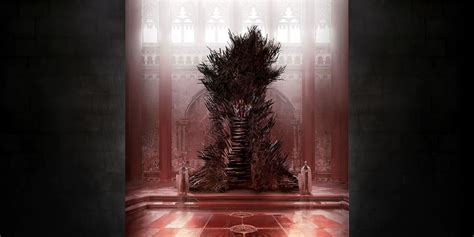The Historical Origins of the Throne
The Iron Throne of Westeros is an imposing and formidable symbol of royal authority and power. Its unique design and intricate craftsmanship have captivated readers and viewers alike, inspiring countless discussions and fan theories. In George R.R. Martin’s “A Song of Ice and Fire” book series, the Iron Throne stands as a testament to the tumultuous history of Westeros and the ambition of its rulers.

The origins of the Iron Throne can be traced back to Aegon I Targaryen, the first Targaryen king of Westeros. Aegon conquered the Seven Kingdoms through a series of bloody battles, and he desired a throne that would reflect his unmatched power. Aegon ordered his master blacksmiths to forge the Iron Throne from the swords of his defeated enemies.
The Physical Characteristics of the Throne
The Iron Throne is a massive and imposing structure, standing over ten feet tall. It is composed of a thousand blades, each representing a defeated lord or king. The blades are fused together with molten iron, creating a jagged and unwieldy surface. Sitting upon the throne is an experience described as both exhilarating and terrifying, as the sharp edges constantly threaten to cut and impale the occupant.
The Symbolic Significance of the Throne
Beyond its physical presence, the Iron Throne holds immense symbolic significance. It represents the brutal and violent nature of power in Westeros. The swords that compose the throne are a constant reminder of the bloodshed and conquest that have shaped the realm. The throne also symbolizes the fragility of power, as it can be easily overthrown by any who are willing to challenge it.
The Challenges of Sitting Upon the Throne
Given its unforgiving design, sitting upon the Iron Throne is a daunting and perilous task. It requires a combination of physical endurance, mental fortitude, and political acumen. The sharp blades constantly challenge the occupant’s physical well-being, while the weight of ruling a vast and tumultuous realm taxes their mental capacity. Only the most capable and ruthless individuals are able to successfully navigate the treacherous waters of the Iron Throne.
The Role of the Iron Throne in Westerosi Politics
The Iron Throne is not merely a symbol of power, but an active participant in Westerosi politics. The throne exerts a profound influence on the desires and ambitions of those who seek to control it. It is a constant reminder of the ultimate goal of every ambitious lord and lady: to sit upon the Iron Throne and rule the Seven Kingdoms.
The Iron Throne is also a source of conflict and division. Throughout the history of Westeros, countless wars have been fought over the control of the throne. The throne has been a constant factor in the political landscape, shaping the alliances and betrayals that have defined Westerosi society.
The Future of the Iron Throne
The future of the Iron Throne is uncertain. The end of Martin’s “A Song of Ice and Fire” series is still unknown, and it is unclear what fate awaits the iconic throne. Some believe that the throne will be destroyed in the upcoming battle for Westeros, while others believe that it will survive as a symbol of the continued struggle for power in the realm.
Conclusion
The Iron Throne is a complex and fascinating symbol that has captured the imagination of millions. It is a testament to the power of storytelling and the enduring legacy of George R.R. Martin’s “A Song of Ice and Fire” series. As the final chapters of the series unfold, fans will eagerly anticipate the fate of the Iron Throne and the destiny of the realm it represents.
